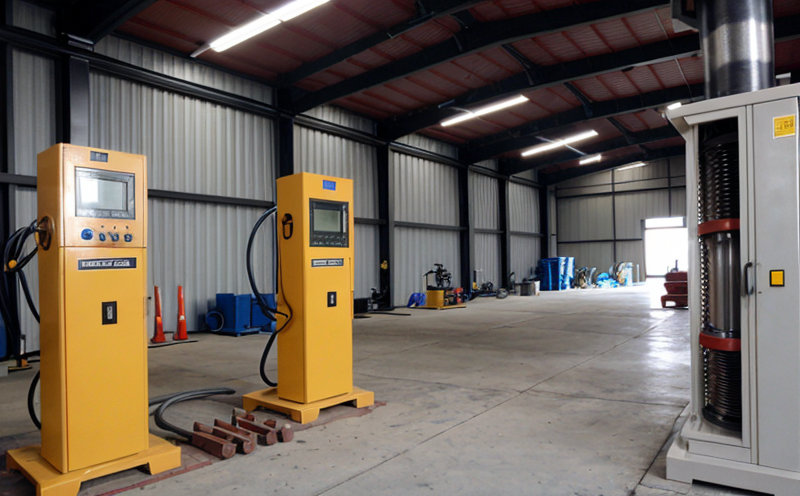ISO 13355-4 Vibration and Handling Simulation
The ISO 13355 series of standards provides a comprehensive framework for testing packaging materials and systems to ensure they can withstand the rigors of transportation, handling, and storage. The fourth part of this standard, ISO 13355-4, focuses specifically on vibration and handling simulation tests. These tests are crucial for ensuring that packaging can protect the contents during transit, thereby minimizing damage and ensuring compliance with regulatory standards.
Vibration and handling are significant factors in product integrity, especially when dealing with fragile goods or items sensitive to shock and impact. ISO 13355-4 provides a method to simulate real-world conditions by subjecting packages to controlled vibration environments that mimic the transport conditions they will encounter.
The standard specifies detailed procedures for testing packaging units under simulated vibration conditions, including specifying frequency ranges, amplitude levels, and duration of exposure. This ensures that manufacturers can evaluate their packaging's performance accurately before it reaches the market or supply chain. Compliance with this test is mandatory in many industries where product damage due to improper packaging could lead to significant financial losses.
Testing according to ISO 13355-4 involves placing a packaged item into a vibration testing machine and subjecting it to specific frequency ranges, amplitudes, and durations. The goal is to replicate the conditions of actual transportation or handling, such as road transport by truck, rail, or air. By doing so, packaging designers can identify potential weaknesses in their designs that could lead to product damage during transit.
The test setup typically includes a vibration testing machine capable of generating controlled frequency ranges and amplitudes over an extended duration. The specimen is secured within the machine according to its actual shipping configuration, ensuring accurate simulation of real-world conditions. Post-test evaluation involves inspecting the package for any signs of damage or failure that could affect product integrity.
ISO 13355-4 is particularly beneficial in sectors where product damage due to improper packaging can result in substantial financial losses. For instance, the pharmaceutical industry places a high priority on ensuring that their products reach consumers intact and undamaged. Similarly, electronics manufacturers rely heavily on robust packaging to protect sensitive components during transit.
The standard's flexibility allows for customization of test parameters based on specific shipping conditions, making it adaptable across various industries. However, it is essential to note that the test setup must be conducted in a controlled environment to ensure accurate results and repeatability.
| Use Case | Description |
|---|---|
| Vibration Testing for Electronics Packaging | This use case involves testing the packaging of electronic devices to ensure they can withstand the vibrations encountered during transport. |
| Fragile Goods Protection in Shipping | The standard is used to test packaging designed to protect fragile goods like glassware or ceramics from damage during transit. |
| Pharmaceutical Distribution Packaging | This application ensures that pharmaceutical products maintain their integrity and effectiveness throughout the supply chain, even under challenging conditions. |
| Sensory Product Protection | The test is used to protect products like food or beverages from damage due to vibration during transport. |
Understanding the specific requirements of ISO 13355-4 can help packaging designers and quality managers make informed decisions about their product's packaging. By adhering to this standard, they can ensure that their products reach consumers in perfect condition, thereby enhancing customer satisfaction and reducing potential losses.
Benefits
The benefits of conducting ISO 13355-4 vibration and handling simulation tests are manifold. Firstly, it helps identify and rectify design flaws early in the development process, saving time and resources that would otherwise be spent on corrective actions post-production.
- Early detection of packaging weaknesses
- Reduction in product damage during transit
- Enhanced customer satisfaction by ensuring product integrity
- Avoidance of regulatory penalties due to non-compliance with standards
- Cost savings through reduced waste and rework
- Improved brand reputation by maintaining consistent product quality
Conducting these tests not only ensures compliance with international standards but also provides valuable insights into packaging performance under simulated transportation conditions. This information can be used to optimize packaging designs, reduce costs, and improve overall supply chain efficiency.
Why Choose This Test
- Comprehensive simulation of real-world transportation conditions
- Identification of potential weaknesses in packaging design early in the development process
- Ensures compliance with international standards (ISO 13355-4)
- Reduces product damage during transit, enhancing customer satisfaction
- Avoidance of regulatory penalties due to non-compliance with standards
- Cost savings through reduced waste and rework
- Improved brand reputation by maintaining consistent product quality
The ISO 13355-4 vibration and handling simulation test is an essential tool for packaging designers, quality managers, and compliance officers. It provides a robust framework for evaluating packaging performance under controlled conditions that mimic real-world scenarios.





